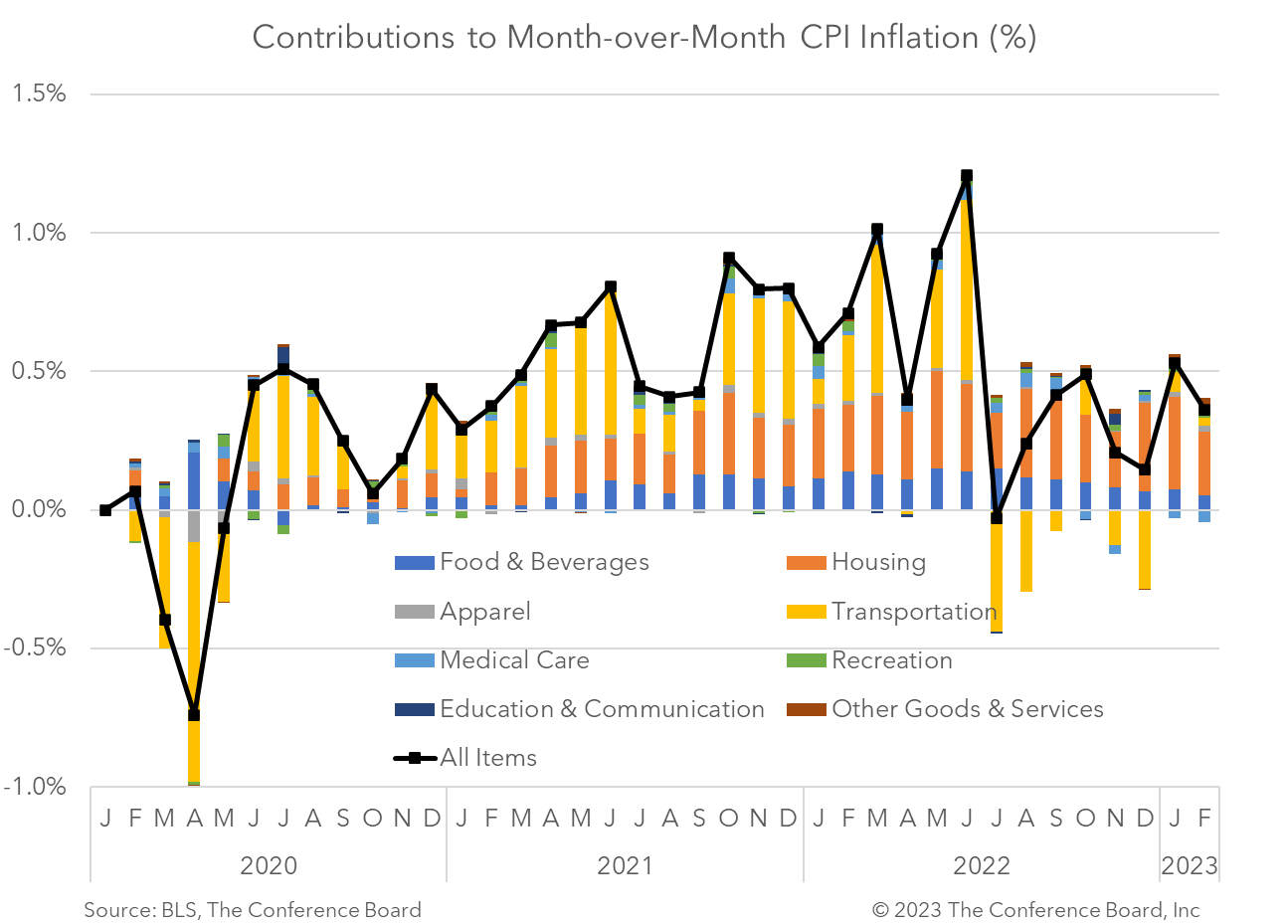
The February Consumer Price Index (CPI) showed that headline inflation slowed to 0.4 percent month-over-month (vs. 0.5% in Jan) while core inflation, which excludes food and energy, rose to 0.5 percent month-over-month (vs. 0.4% in Jan). Year-over-year inflation rates for both the headline and core indices fell, but remain elevated and far from the Fed’s 2-percent target. Many CPI components improved in the month, but rising shelter prices remained a major factor in the month-over-month increases in this month’s CPI readings. February CPI readings showed some relief across a variety of goods and services. For instance, food price increases slowed for the month and energy prices fell. However, continued increases in shelter prices were responsible for approximately 70% of the inflation reported in the topline CPI. While relief in this key component of inflation is on the way, according to Chair Powell and private sector data on new rents, it will take time for the CPI numbers to fully incorporate this trend. Unfortunately, these data do not offset the broader surge in the inflation recorded in the January CPI. This puts the Fed in a difficult position. On the one hand, it appears that some additional rate hikes are needed to continue to cool the economy and bring prices down. On the other hand, the recent failure of several banks, including Silicon Valley Bank, have introduced concerns about financial stability. At this point we continue to expect the Fed to hike by 25 basis points at the conclusion of its next meeting on March 22, but that expectation may change if additional banks fail and concerns about financial stability increase over the next few days. Headline CPI slowed to 6.0 percent year-over-year in February, vs. 6.4 percent in January. In month-over-month terms this topline inflation metric fell to 0.4 percent, vs. 0.5 percent in the month prior. According to the BLS, the index for shelter accounted for 70 percent of the increase in the topline CPI this month, with indexes for food, recreation and household furnishings playing a lesser role. Core CPI, which is total CPI less volatile food and energy prices, slowed to 5.5 percent year-over-year in February, vs. 5.6 percent in January. The core index rose to 0.5 percent month-over-month in February, vs. 0.4 in January. As was the case with topline CPI, the increases in the core CPI was driven by shelter prices. Core CPI excluding shelter prices rose by just 0.2 percent month-over-month, vs. 0.2 percent in January.Insights for What’s Ahead
February Inflation Highlights

Fed Doves Get Nice Holiday Gift as CPI Inflation Drops
December 18, 2025
FOMC Decision: Do Three Dissents Mean a January Pause?
December 10, 2025
Fed December Decision: Not So Clear Cut
December 09, 2025
September Inflation Pause Bodes Well for Fed Cut
December 05, 2025
September Retail Sales Show Consumers Taking a Breather
November 25, 2025
New Truce Offers Stability after US–China Trade Plummeted in 2025
November 05, 2025
